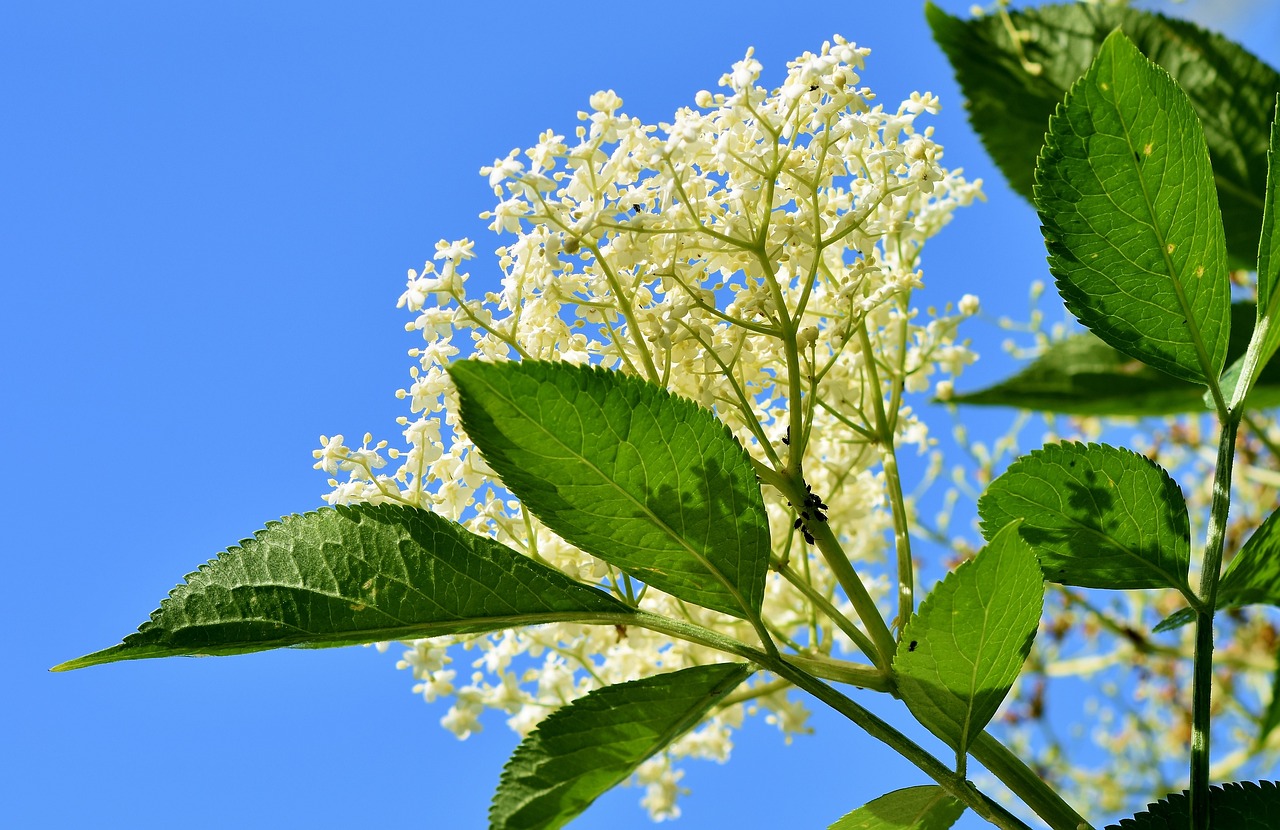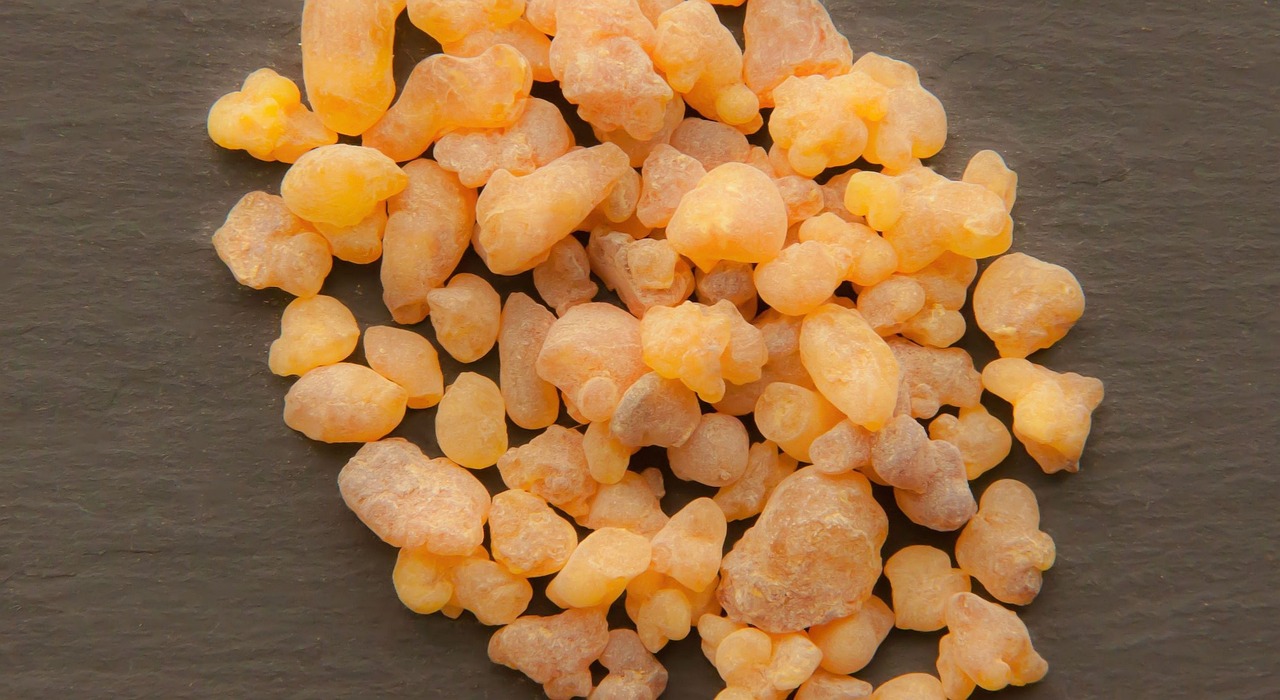This article delves into the potential benefits of cinnamon bark in managing blood sugar levels, examining its properties, mechanisms, and practical applications for health enthusiasts and individuals with diabetes.
What is Cinnamon Bark?
Cinnamon bark is obtained from the inner bark of trees belonging to the Cinnamomum genus. This spice is not only cherished for its delightful aroma and flavor but also revered for its numerous health benefits, particularly in the realm of blood sugar regulation.
How Does Cinnamon Bark Affect Blood Sugar Levels?
Research has shown that cinnamon bark may enhance insulin sensitivity and improve glucose metabolism. Understanding these mechanisms is essential for individuals looking to incorporate cinnamon into their dietary routines effectively.
Active Compounds in Cinnamon
- Cinnamaldehyde: This primary active compound mimics insulin, facilitating glucose uptake in cells and aiding in blood sugar control.
- Polyphenols: These compounds possess powerful antioxidant properties that can reduce oxidative stress, potentially leading to improved insulin sensitivity and better management of blood sugar levels.
Scientific Studies on Cinnamon and Blood Sugar
Numerous studies have investigated the effects of cinnamon on blood sugar levels. A comprehensive review of these studies reveals valuable insights into its efficacy, particularly in the context of diabetes management.
How to Incorporate Cinnamon Bark into Your Diet
Incorporating cinnamon into your diet can be both simple and enjoyable. Here are some popular ways:
- Add cinnamon to smoothies for a flavorful boost.
- Sprinkle it on oatmeal for added warmth and sweetness.
- Use it in baked goods to enhance flavor and health benefits.
Recommended Dosage for Blood Sugar Management
Finding the right dosage of cinnamon for blood sugar control is essential. Health professionals often recommend starting with a small amount and gradually increasing it, while monitoring individual responses.
Potential Side Effects and Considerations
While cinnamon is generally safe, excessive consumption can lead to adverse effects. Awareness of potential side effects ensures safe and effective use for blood sugar management.
- Allergic Reactions: Some individuals may experience allergic reactions to cinnamon. Symptoms can include skin rashes or respiratory issues.
- Interactions with Medications: Cinnamon may interact with certain medications, especially those used for diabetes. Consulting healthcare professionals before incorporating it into a treatment plan is crucial for safety.
Conclusion: Embracing Cinnamon for Health
Cinnamon bark offers promising benefits for blood sugar management. By understanding its properties and incorporating it wisely, individuals can enhance their health and well-being naturally.

What is Cinnamon Bark?
Exploring the Blood Sugar-Balancing Effects of Cinnamon Bark
Cinnamon bark, known for its distinct flavor and aroma, is derived from the inner bark of Cinnamomum trees. This versatile spice has been a staple in culinary traditions worldwide, but it is also celebrated for its numerous health benefits, particularly in regulating blood sugar levels. In this article, we explore the properties of cinnamon bark, its effects on blood sugar, and how it can be effectively incorporated into your diet.
Cinnamon bark is obtained from the inner layer of the bark of specific trees in the Cinnamomum genus. It is typically processed into sticks or ground into a fine powder. This spice is not only prized for its flavor in various dishes but also for its medicinal properties. Research has shown that cinnamon bark may play a significant role in blood sugar regulation, making it a popular choice among health enthusiasts and individuals managing diabetes.
How Does Cinnamon Bark Affect Blood Sugar Levels?
Studies suggest that cinnamon bark may improve insulin sensitivity and enhance glucose metabolism. These effects are attributed to the active compounds present in cinnamon, which can assist in maintaining healthy blood sugar levels. Understanding these mechanisms allows individuals to utilize cinnamon more effectively in their dietary routines.
Active Compounds in Cinnamon
Cinnamon contains several bioactive compounds, including cinnamaldehyde and polyphenols. These compounds contribute to its health benefits, particularly in blood sugar management. Cinnamaldehyde, the primary active component, has been shown to mimic insulin, thereby facilitating glucose uptake in cells.
Scientific Studies on Cinnamon and Blood Sugar
Numerous scientific studies have investigated the effects of cinnamon on blood sugar levels. A review of these studies reveals that cinnamon can significantly lower fasting blood glucose levels and improve insulin sensitivity in individuals with type 2 diabetes.
How to Incorporate Cinnamon Bark into Your Diet
- Add cinnamon to your morning oatmeal or smoothie.
- Sprinkle it on baked goods for added flavor.
- Mix it into herbal teas or coffee for a warming beverage.
Potential Side Effects and Considerations
While cinnamon is generally safe for most people, excessive consumption may lead to adverse effects. Some individuals may experience allergic reactions, and cinnamon can interact with certain medications, particularly those used for diabetes. It is advisable to consult healthcare professionals before making significant changes to your diet.
Conclusion: Embracing Cinnamon for Health
In conclusion, cinnamon bark is not only a flavorful spice but also a valuable ally in managing blood sugar levels. By understanding its properties and incorporating it wisely into your diet, you can enhance your health naturally.

How Does Cinnamon Bark Affect Blood Sugar Levels?
Cinnamon bark has garnered attention in recent years for its potential blood sugar-regulating properties. Research suggests that this aromatic spice may play a significant role in enhancing insulin sensitivity and improving glucose metabolism. By understanding how cinnamon interacts with the body, individuals can effectively incorporate it into their dietary routines for better health outcomes.
Mechanisms Behind Cinnamon’s Effects
- Insulin Mimicking: One of the key components of cinnamon, cinnamaldehyde, has been shown to mimic insulin, facilitating the uptake of glucose by cells. This action can help lower blood sugar levels post-meal.
- Antioxidant Properties: Cinnamon is rich in polyphenols, which are known for their antioxidant effects. These compounds help reduce oxidative stress, potentially improving insulin sensitivity and overall metabolic health.
Scientific Evidence
Numerous studies have examined the impact of cinnamon on blood sugar levels. For instance, a meta-analysis published in the Journal of Medicinal Food found that cinnamon supplementation significantly reduced fasting blood glucose levels in individuals with type 2 diabetes. Such findings underscore cinnamon’s potential as a complementary approach in diabetes management.
Incorporating Cinnamon into Your Diet
Adding cinnamon to your meals can be both simple and enjoyable. Here are some popular ways to include it:
- Sprinkle cinnamon on oatmeal or yogurt for a flavorful breakfast.
- Mix it into smoothies for an extra health boost.
- Use it in baked goods such as muffins or bread for added flavor.
Conclusion
In summary, cinnamon bark presents a promising natural option for those looking to manage their blood sugar levels. By understanding its mechanisms and incorporating it wisely into daily diets, individuals can harness its benefits effectively. As always, it is advisable to consult with healthcare professionals before making significant dietary changes, especially for those with existing health conditions.
Active Compounds in Cinnamon
Cinnamon, a popular spice known for its delightful flavor and aroma, is not just a culinary favorite but also a powerhouse of health benefits. Among its various properties, the bioactive compounds found in cinnamon play a pivotal role in its ability to regulate blood sugar levels. The two primary compounds responsible for these effects are cinnamaldehyde and polyphenols.
Cinnamaldehyde: The Key Player
Cinnamaldehyde is the main active component in cinnamon, accounting for its distinct flavor and many of its health benefits. Research indicates that this compound can mimic insulin, enhancing glucose uptake by cells. This mechanism is crucial for individuals aiming to manage their blood sugar levels effectively. By improving insulin sensitivity, cinnamaldehyde helps the body utilize glucose more efficiently, which can lead to lower blood sugar levels after meals.
Polyphenols: Antioxidant Powerhouses
Polyphenols, another significant group of compounds found in cinnamon, are renowned for their antioxidant properties. These compounds help combat oxidative stress, which is linked to various chronic diseases, including diabetes. By reducing oxidative stress, polyphenols may enhance insulin sensitivity, further aiding in blood sugar management. Additionally, they contribute to overall health by promoting cardiovascular health and reducing inflammation.
Combining Forces for Better Health
The synergistic effects of cinnamaldehyde and polyphenols make cinnamon a powerful ally in the quest for better blood sugar control. Incorporating cinnamon into your diet can be an enjoyable way to harness these benefits. Whether sprinkled on oatmeal, blended into smoothies, or used in baked goods, cinnamon not only enhances flavor but also supports health.
In conclusion, the active compounds in cinnamon, particularly cinnamaldehyde and polyphenols, are essential for its blood sugar-lowering effects. Understanding these components can empower individuals to use cinnamon effectively as part of a balanced diet.
Cinnamaldehyde’s Role
in Blood Sugar Management
Cinnamaldehyde is the primary active compound found in cinnamon bark, and it has garnered significant attention for its potential to assist in blood sugar regulation. This compound is not only responsible for the distinct aroma and flavor of cinnamon but also plays a crucial role in metabolic processes that impact glucose levels in the body.
Research has demonstrated that cinnamaldehyde can mimic insulin, facilitating the uptake of glucose by cells. This insulin-like effect is particularly beneficial for individuals with insulin resistance, a common issue in those with type 2 diabetes. By enhancing the body’s response to insulin, cinnamaldehyde helps to lower blood sugar levels and improve overall metabolic health.
Moreover, studies have shown that cinnamaldehyde may activate specific signaling pathways that enhance glucose metabolism. This action not only aids in immediate blood sugar control but also contributes to long-term health benefits by reducing the risk of complications associated with diabetes.
- Improved Insulin Sensitivity: Cinnamaldehyde helps the body utilize insulin more effectively, which is essential for maintaining stable blood sugar levels.
- Enhanced Glucose Uptake: By promoting glucose absorption in cells, it reduces the amount of sugar circulating in the bloodstream.
- Antioxidant Properties: Cinnamaldehyde also exhibits antioxidant effects, which can protect against oxidative stress, a factor that contributes to insulin resistance.
Incorporating cinnamon into your diet can be a simple yet effective strategy for managing blood sugar levels. Whether sprinkled on oatmeal, blended into smoothies, or used in baking, the benefits of cinnamaldehyde can be easily accessed.
In conclusion, the role of cinnamaldehyde in blood sugar management is significant. Its ability to mimic insulin and enhance glucose uptake makes it a valuable addition to the diets of those looking to maintain healthy blood sugar levels. As research continues to unfold, the potential of this compound may lead to more innovative approaches in diabetes management.
Polyphenols and Their Benefits
Polyphenols are a category of compounds found abundantly in plants, renowned for their antioxidant properties. Among these, cinnamon is particularly rich in polyphenols, which play a significant role in promoting health and well-being. This section explores the various benefits of polyphenols found in cinnamon, particularly their impact on blood sugar management.
One of the primary advantages of polyphenols is their ability to combat oxidative stress. Oxidative stress occurs when there is an imbalance between free radicals and antioxidants in the body, leading to cellular damage. The polyphenols in cinnamon help neutralize these free radicals, thereby protecting cells from damage and promoting overall health.
Research suggests that the antioxidant effects of cinnamon’s polyphenols can enhance insulin sensitivity. Insulin is a hormone that regulates blood sugar levels, and improved sensitivity means that the body’s cells can utilize glucose more effectively. This is particularly beneficial for individuals managing diabetes or those at risk of developing the condition.
| Benefit | Description |
|---|---|
| Antioxidant Properties | Neutralizes free radicals and reduces oxidative stress. |
| Improved Insulin Sensitivity | Enhances the body’s ability to use glucose, aiding blood sugar control. |
| Anti-Inflammatory Effects | May reduce inflammation, contributing to better overall health. |
Moreover, the consumption of cinnamon, particularly its polyphenols, has been linked to lower levels of cholesterol and triglycerides, which are crucial for cardiovascular health. By supporting heart health, these compounds contribute to a holistic approach to managing blood sugar and overall wellness.
In conclusion, the polyphenols found in cinnamon are not just beneficial for their antioxidant properties but also for their potential to enhance insulin sensitivity and support blood sugar management. Incorporating cinnamon into your diet can be a delicious way to harness these health benefits, making it a valuable addition to any health-conscious lifestyle.
Scientific Studies on Cinnamon and Blood Sugar
The exploration of cinnamon’s effects on blood sugar levels has garnered significant attention in the scientific community. Numerous studies have been conducted to evaluate its potential benefits, particularly for individuals managing diabetes. This article aims to provide a comprehensive overview of the findings from various research efforts, highlighting cinnamon’s role in blood sugar regulation.
Understanding Cinnamon’s Mechanisms
Cinnamon, particularly the Cassia variety, contains several bioactive compounds that have been linked to improved blood sugar control. Key among these are cinnamaldehyde and polyphenols, which are believed to enhance insulin sensitivity and promote glucose metabolism. These compounds work synergistically to help lower fasting blood glucose levels and improve overall glycemic control.
Key Research Findings
- A meta-analysis conducted in 2019 reviewed 10 randomized controlled trials, revealing that cinnamon supplementation significantly reduced fasting blood glucose levels by an average of 24 mg/dL.
- Another study published in the Journal of Diabetes Research found that participants who consumed cinnamon daily experienced a 12% decrease in HbA1c levels, a crucial marker for long-term blood sugar management.
- Research from Diabetes Care indicated that cinnamon could improve insulin sensitivity, making it easier for the body to use glucose for energy rather than storing it as fat.
Incorporating Cinnamon into Your Diet
For those looking to leverage cinnamon’s benefits, it can be easily incorporated into various meals. Adding it to smoothies, oatmeal, or even savory dishes can enhance flavor while providing health benefits. However, it’s essential to consult with a healthcare provider to determine the appropriate dosage for individual needs.
Conclusion
The body of research surrounding cinnamon’s impact on blood sugar levels is growing, providing promising insights for its use in diabetes management. By understanding the underlying mechanisms and incorporating this spice into daily routines, individuals may find a natural way to support their health.

How to Incorporate Cinnamon Bark into Your Diet
Integrating cinnamon bark into your daily meals can be both simple and delicious. This spice not only enhances flavors but also offers numerous health benefits, particularly in managing blood sugar levels. Here are some effective and enjoyable ways to add cinnamon to your diet:
- Breakfast Boost: Sprinkle cinnamon on your morning oatmeal or yogurt. This not only adds a warm, sweet flavor but also enhances the nutritional profile of your breakfast.
- Smoothie Sensation: Add a teaspoon of cinnamon to your favorite smoothie. It pairs well with fruits like bananas and apples, providing a delightful twist.
- Baking Buddy: Incorporate cinnamon into your baked goods such as muffins, cakes, or bread. It complements sweet recipes beautifully and can even replace some sugar, making your treats healthier.
- Spiced Beverages: Enhance your coffee or tea by adding a dash of cinnamon. It can transform a regular beverage into a comforting drink while also supporting blood sugar management.
- Savory Dishes: Experiment by adding cinnamon to savory dishes like stews or curries. Its warm, aromatic flavor can elevate the dish and provide a unique taste experience.
While incorporating cinnamon into your diet, it’s essential to consider the recommended dosage for health benefits. A common guideline suggests using about 1 teaspoon of ground cinnamon daily. However, it’s advisable to consult with a healthcare professional, especially if you have underlying health conditions or are taking medications.
Conclusion: By following these simple methods, you can easily incorporate cinnamon bark into your meals, enhancing both flavor and health benefits. Whether you prefer sweet or savory dishes, cinnamon can be a versatile addition to your diet.
Popular Ways to Use Cinnamon
Cinnamon is a versatile spice that can elevate both the flavor and health benefits of various dishes. Its unique taste and potential health benefits make it a popular choice in many kitchens. Here, we will explore in your daily meals, ensuring you can maximize its advantages while enjoying delightful culinary experiences.
| Dish Type | Usage Ideas |
|---|---|
| Smoothies | Add a teaspoon of cinnamon to your favorite smoothie recipes. It pairs well with banana, spinach, and almond milk, providing a delicious flavor boost. |
| Oatmeal | Sprinkle cinnamon on your morning oatmeal for added taste and health benefits. Combine it with fruits like apples or berries for a nutritious breakfast. |
| Baked Goods | Incorporate cinnamon into muffins, bread, and cookies. It enhances sweetness naturally, allowing for reduced sugar in recipes. |
| Hot Beverages | Stir cinnamon into coffee, tea, or hot chocolate. It not only adds flavor but also can help regulate blood sugar levels. |
| Savory Dishes | Use cinnamon in savory dishes like curries or stews. It adds depth and warmth to the flavor profile. |
To maximize the health benefits of cinnamon, it is essential to understand the best practices for its usage. Incorporating cinnamon into your diet can be both enjoyable and beneficial, contributing to overall well-being while tantalizing your taste buds.
Recommended Dosage for Blood Sugar Management
When considering the use of cinnamon for managing blood sugar levels, it is crucial to identify the appropriate dosage that aligns with individual health needs. Cinnamon, particularly the Ceylon variety, has been studied for its potential benefits in improving insulin sensitivity and regulating glucose levels. However, determining the right amount can vary based on several factors.
- Consult Healthcare Professionals: Before adding cinnamon to your regimen, it is advisable to consult with a healthcare provider or a nutritionist. They can provide personalized recommendations based on your health status and dietary needs.
- Common Dosage Recommendations: Research suggests that a daily intake of 1 to 6 grams of cinnamon may be beneficial for blood sugar control. This can be incorporated through various forms, such as powder, capsules, or extracts.
- Monitor Your Response: It is important to monitor your blood sugar levels regularly when introducing cinnamon into your diet. This helps in understanding how your body responds to the spice and adjusting the dosage accordingly.
- Incorporate Gradually: Start with a lower dosage and gradually increase it to assess tolerance and effectiveness. This approach minimizes the risk of potential side effects.
While cinnamon is generally safe for most people, excessive consumption can lead to adverse effects, such as liver damage due to high levels of coumarin found in some types of cinnamon. Therefore, sticking to recommended dosages is essential for safe use.
In conclusion, determining the appropriate dosage of cinnamon for blood sugar management is essential for maximizing its benefits while minimizing risks. By following professional guidelines and monitoring your body’s response, you can effectively incorporate this spice into your health routine.

Potential Side Effects and Considerations
While cinnamon is widely regarded as a beneficial spice for managing blood sugar levels, it is important to understand that excessive consumption can lead to various adverse effects. Being informed about these potential side effects is crucial for safe and effective use, especially for individuals looking to incorporate cinnamon into their dietary regimen for blood sugar management.
- Gastrointestinal Issues: Overconsumption of cinnamon may cause stomach upset, including symptoms like nausea, diarrhea, or abdominal pain. It’s advisable to start with small amounts and monitor your body’s reaction.
- Allergic Reactions: Some individuals may experience allergic reactions to cinnamon, which can manifest as skin rashes, itching, or respiratory issues. If you have a known allergy to spices, proceed with caution.
- Interactions with Medications: Cinnamon can interact with certain medications, particularly those used to manage diabetes. It may enhance the effects of these medications, leading to hypoglycemia (low blood sugar). Always consult a healthcare professional before adding cinnamon to your treatment plan.
- High Coumarin Content: Certain types of cinnamon, particularly Cassia cinnamon, contain high levels of coumarin, which can be harmful in large quantities. Chronic exposure to high coumarin levels can lead to liver damage and other health issues.
In conclusion, while cinnamon can be a beneficial addition to your diet for blood sugar management, it is essential to consume it in moderation. Awareness of these potential side effects ensures that individuals can enjoy the health benefits of cinnamon while minimizing risks.
Allergic Reactions
Allergic Reactions to Cinnamon: Understanding Symptoms and Implications
Cinnamon is not only a popular spice known for its delightful flavor but also recognized for its potential health benefits, particularly in blood sugar management. However, it is essential to be aware that some individuals may experience to cinnamon. Understanding the symptoms of these reactions can help individuals make informed dietary choices, especially for those with known sensitivities.
What Are the Symptoms of Cinnamon Allergy?
- Skin Reactions: Some people may develop rashes, hives, or eczema after consuming cinnamon or coming into contact with it.
- Respiratory Issues: Allergic reactions can also manifest as respiratory problems, including sneezing, nasal congestion, or difficulty breathing.
- Gastrointestinal Distress: Symptoms such as nausea, vomiting, or abdominal pain may occur in those who are sensitive to cinnamon.
- Anaphylaxis: In rare cases, a severe allergic reaction known as anaphylaxis can occur, which requires immediate medical attention.
Why Recognizing Symptoms Matters
For individuals with a history of allergies, recognizing the symptoms of cinnamon allergy is crucial. This awareness not only aids in avoiding potential allergens but also helps in making better dietary choices. If you suspect an allergy, it is advisable to consult a healthcare professional for proper testing and guidance.
How to Avoid Cinnamon Allergies
- Read labels carefully when purchasing food products.
- Inform restaurants about your allergy to avoid cross-contamination.
- Consider alternatives to cinnamon that provide similar flavors without the risk of allergic reactions.
In conclusion, while cinnamon offers numerous health benefits, it is vital to recognize and understand the potential for allergic reactions. By being informed and cautious, individuals can enjoy the flavors and benefits of cinnamon safely.
Interactions with Medications
Cinnamon, a popular spice known for its distinctive flavor and potential health benefits, has garnered attention for its role in managing blood sugar levels. However, it is important to recognize that cinnamon may interact with certain medications, particularly those prescribed for diabetes management. This interaction can lead to either enhanced effects or adverse reactions, making it essential for individuals considering cinnamon as a supplement to consult with healthcare professionals.
Understanding the Risks
- Cinnamon can potentially amplify the effects of antidiabetic medications. This can result in hypoglycemia, a condition characterized by dangerously low blood sugar levels.
- Individuals taking medications such as metformin or sulfonylureas should be particularly cautious, as these drugs are designed to lower blood sugar levels, and adding cinnamon may exacerbate this effect.
- Moreover, cinnamon can influence the metabolism of certain drugs, potentially altering their efficacy. This underscores the need for careful monitoring when introducing cinnamon into a treatment regimen.
Consulting Healthcare Professionals
Before incorporating cinnamon into a treatment plan, it is crucial to have an open discussion with a healthcare provider. They can offer personalized advice based on individual health conditions, current medications, and overall treatment goals. This step is vital for ensuring safety and optimizing health outcomes.
Conclusion
In summary, while cinnamon offers promising benefits for blood sugar management, its potential interactions with medications necessitate a cautious approach. Always seek professional guidance to navigate these complexities and ensure safe usage.

Conclusion: Embracing Cinnamon for Health
Cinnamon bark has emerged as a natural remedy with significant potential for managing blood sugar levels. This spice, derived from the inner bark of the Cinnamomum tree, is not only cherished for its delightful flavor but also for its impressive health benefits. Understanding how to incorporate cinnamon effectively into your daily routine can enhance overall well-being and promote better blood sugar management.
Understanding the Benefits
- Enhances Insulin Sensitivity: Studies indicate that cinnamon may improve insulin sensitivity, allowing for better glucose uptake by the cells.
- Supports Glucose Metabolism: The active compounds in cinnamon, particularly cinnamaldehyde, play a crucial role in regulating glucose levels.
- Rich in Antioxidants: Polyphenols found in cinnamon contribute to its antioxidant properties, which can help reduce oxidative stress in the body.
Incorporating Cinnamon into Your Diet
Adding cinnamon to meals can be both simple and enjoyable. Here are some popular ways to use cinnamon:
- Sprinkle it on oatmeal or yogurt for a flavorful breakfast.
- Mix it into smoothies for a healthy boost.
- Use it in baked goods like muffins and bread to enhance flavor and health benefits.
Recommended Dosage
While cinnamon is generally safe, it is important to find the right dosage for blood sugar management. Health professionals often recommend about 1 to 6 grams of cinnamon per day, depending on individual needs and health conditions.
Potential Side Effects
Although cinnamon is safe for most people, excessive consumption may lead to adverse effects such as:
- Allergic reactions in sensitive individuals.
- Interactions with certain medications, particularly those for diabetes.
Consulting with a healthcare provider before adding cinnamon to your regimen is advisable to ensure safety and effectiveness.
Final Thoughts
In conclusion, embracing cinnamon bark as part of a balanced diet can offer promising benefits for blood sugar management. By understanding its properties and incorporating it wisely, individuals can take proactive steps towards enhancing their health and well-being naturally.
















